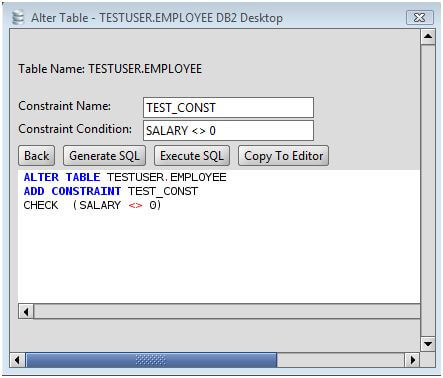

- #REDSHIFT ALTER TABLE HANGS HOW TO#
- #REDSHIFT ALTER TABLE HANGS UPDATE#
- #REDSHIFT ALTER TABLE HANGS CODE#
It's also advisable to rebuild any downstream models, as indicated by the trailing +.įor detailed usage instructions, check out the dbt run documentation. You can learn more about surrogate keys here. Your database and incremental strategy will determine the specific error that you see, so if you're having issues running an incremental model, it's a good idea to double check that the unique key is truly unique in both your existing database table and your new incremental rows. Please note that if there's a unique_key with more than one row in either the existing target table or the new incremental rows, the incremental model run will fail.
#REDSHIFT ALTER TABLE HANGS UPDATE#
Refer to strategy specific configs for more options on managing this update behavior, like choosing only specific columns to update.

If a duplicate row arrives, it can be ignored. If new information arrives for an existing unique_key, that new information can replace the current information instead of being appended to the table. In some warehouses, filtering your records early can vastly improve the run time of your query! Defining a unique key (optional) Ī unique_key enables updating existing rows instead of just appending new rows.
#REDSHIFT ALTER TABLE HANGS CODE#
Your is_incremental() code will check for rows created or modified since the last time dbt ran this model.įor example, a model that includes a computationally slow transformation on a column can be built incrementally, as follows:įor more complex incremental models that make use of Common Table Expressions (CTEs), you should consider the impact of the position of the is_incremental() macro on query performance. For updated records, you'll need to define a unique key to ensure you don't bring in modified records as duplicates. dbt makes it easy to query your target table by using the " " variable.Īlso common is wanting to capture both new and updated records. The best way to find the timestamp of the most recent run of this model is by checking the most recent timestamp in your target table. Often, you'll want to filter for "new" rows, as in, rows that have been created since the last time dbt ran this model. To tell dbt which rows it should transform on an incremental run, wrap valid SQL that filters for these rows in the is_incremental() macro.
#REDSHIFT ALTER TABLE HANGS HOW TO#
How to filter the rows on an incremental run.To use incremental models, you also need to tell dbt:


 0 kommentar(er)
0 kommentar(er)
